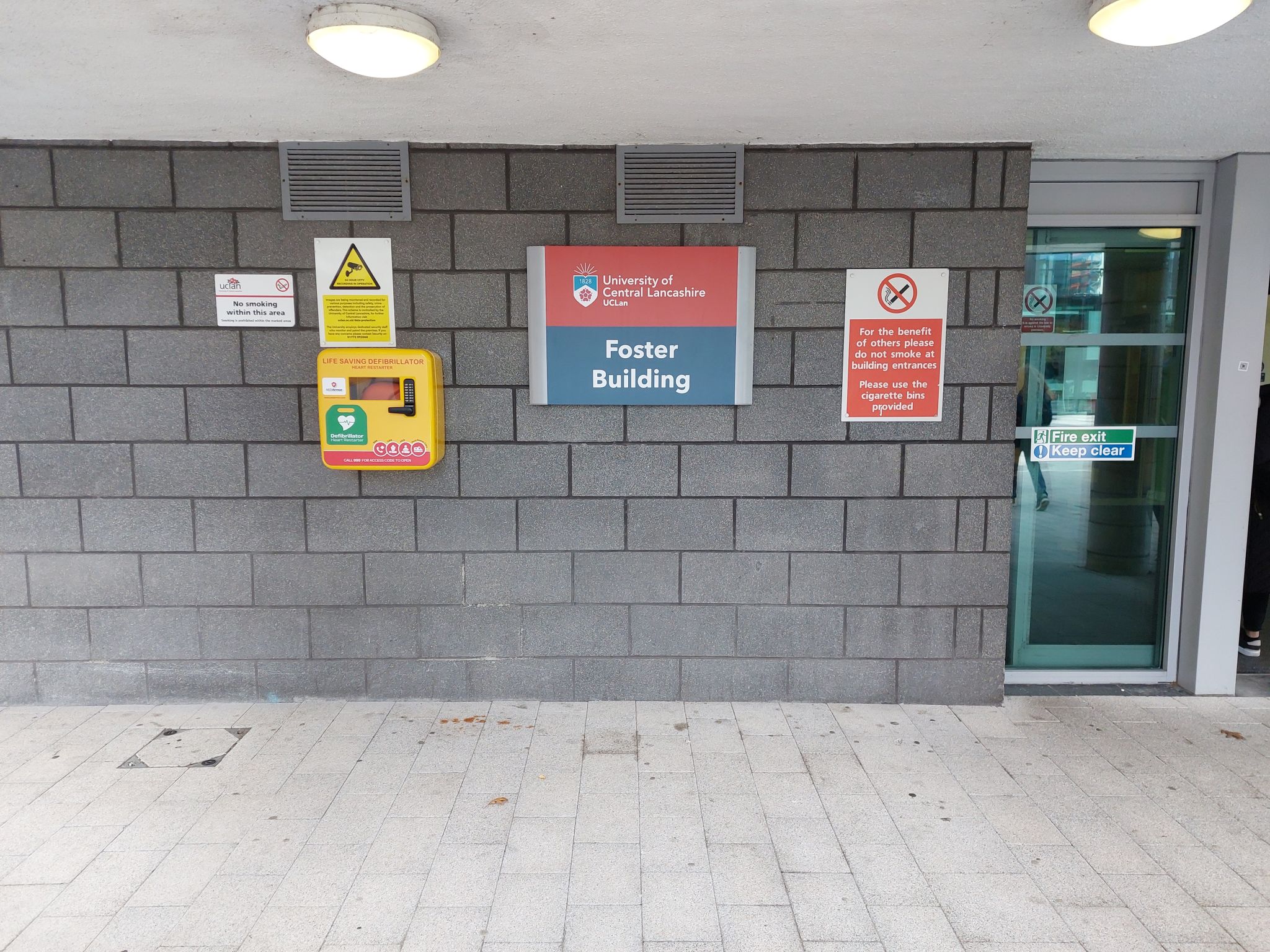Project Description
UCLAN Defibrillators
Life Saving Defibrilliators installed Free of Charge by Thompson Building Services Engineers
It was our pleasure to support our valued client the University of Central Lancashire when they asked fror help installing two public access defibrillators.
Daniel Darley Estates Maintenance Supervisor at UCLan said:
“The new devices can be found next to the Students Union shop on Fylde Rd and at the Entrance to Foster Building. The idea to provide them for public access came from a student suggestion via the Unitu student voice platform.
Defibrillators are already dotted around all three of our campuses for students and colleagues, but the two new devices are in more public locations and therefore accessible to the wider community. Installation was completed free of charge by a local company, Thompson Building Services Engineers (EE Thompson and Son Ltd)
A defibrillator should be used when a person is in cardiac arrest. They are hugely important tools and, if used in addition to quality CPR, can massively improve somebody’s chance of survival. Sports and Security colleagues have successfully used defibrillators at least three times on our campus in the last few years.
If you need a defibrillator on campus, you can call security and you will be directed to the nearest one – 01772 892068”
How to use a defibrillator
Below is some useful guidance taken from the British Heart Foundation website on how and when to use a defibrillator.
If you see someone having a cardiac arrest, call 999, start CPR and get someone to find a defibrillator. The emergency operator can advise you if you can’t find one. Once you get the defibrillator, turn it on and continue CPR until the device tells you to stop.
If you’re on your own, don’t interrupt CPR to go and find a defibrillator. If it’s possible, send someone else to find one. When you call 999, the operator can tell you if there’s a public access defibrillator nearby.
To use a defibrillator, follow these simple steps:
- Step 1: Turn the defibrillator on and follow its instructions.
- Step 2: Peel off the sticky pads and attach them to the patient’s skin, one on each side of the chest, as shown in the picture on the defibrillator.
- Step 3: Once the pads have been attached, stop CPR and don’t touch the patient. The defibrillator will then check the patient’s heart rhythm.
- Step 4: The defibrillator will decide whether a shock is needed and if so, it will tell you to press the shock button. An automatic defibrillator will shock the patient without prompt. Don’t touch the patient while they are being shocked.
- Step 5: The defibrillator will tell you when the shock has been delivered and whether you need to continue CPR.
- Step 6: Continue with chest compressions until the patient shows signs of life or the defibrillator tells you to stop so it can analyse the heartbeat again.
- Anyone can use a defibrillator and you don’t need training. Once you turn it on, it will give clear instructions on how to attach the defibrillator pads. The device checks the heart rhythm and will only tell you to shock if it’s needed. You can’t shock someone accidentally.
GALLERY



